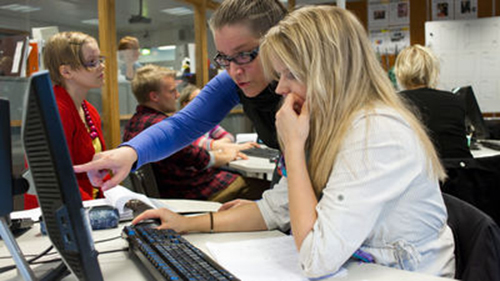
For any country to remain competitive in global education, it is important that its thought leaders continue to evaluate their system’s approach to learning. Leading education systems such as Finland are doing this. Despite shorter schools days, less homework and fewer standardized tests, Finnish students have maintained an exceptional track record in PISA tests over the years, topping the world charts in Math, Science and Reading. So, what are some of the secrets to their success, and perhaps more importantly, what are some of the innovative learning concepts they support moving forward? I had the opportunity to speak with Krista Kiuru, Finnish Minister of Education and Science, Peter Vesterbacka and Sanna Lukander of Rovio Entertainment, Dr. Jari Multisilta, Director of the Cicero Learning Network at the University of Helsinki, and Ulla Engestrom, CEO of ThingLink.
Krista, in Finland you face the challenge of an increasingly diverse student population. What have you learned from other leading education systems that you believe can help you address this?
All systems have their own strengths, corresponding to their own history and culture. Equity and equality have been the cornerstones of the Finnish system, and we are struggling all the time to ensure equal opportunities for every single child. Growing diversity is definitely a challenge but it could be enriching and a positive factor. The US is a good example of how diversity can be turned into a positive force. I have been impressed by how you support pupils’ self-esteem and identity.

Technology continues to change our world. Some employers argue that graduates don’t have the current skills needed and point to the need to reform education. Do you agree?
The world is indeed changing rapidly in many ways. Technology is naturally one factor but there are other skills needed as well. Students will need ‘learning to learn’ skills, abilities to access and manage vast amounts of information, and a positive attitude towards learning, just to mention a few examples. It is quite likely that the young people of today will change their careers several times in their lifetime, and the education system must support that; basic education must give a solid basis for future life. In addition to this, constant dialogue with employers and other stakeholders in the society is needed. Schools cannot isolate themselves and they cannot live in the past.
Technology claims to be able to individualize student learning. Is that seen by Finnish educators as a positive opportunity? How do Finnish teachers (renowned for their pedagogical criteria) feel about this?
I never underestimate the importance of technology but it is good to remember that technology is just a tool – the content is what matters at the end of the day. I am pretty sure that Finnish teachers share this view, too. However, we have to understand and accept that school is – and it should be – part of the rapidly digitalizing society. Today’ s school cannot be an airplane in which you have to ‘switch off all electronic devices’ at the door and come back to your normal life only when the school day is over. This does not work.
In addition, technology can make learning more fun. Educational games, especially those developed together with teacher trainers and pedagogical research, could be used more in teaching. In fact, they could especially increase boys’ motivation in learning.
Sanna and Peter, can you briefly describe the Angry Birds Playground learning concept?
Angry Birds Playground combines the best of two great brands: Finnish education and Angry Birds. It is a kindergarten program that you can start anywhere.
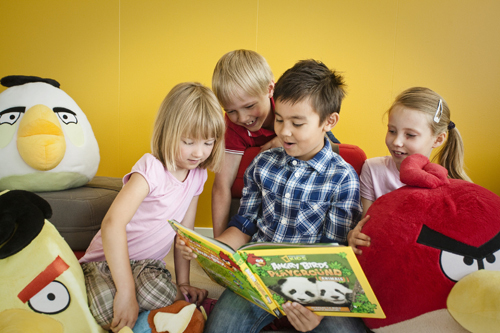
Jari, what were the key findings from your Angry Birds research in Finland and Singapore?
The results indicated that children both in Finland and in Singapore felt the learning activities with Angry Birds Playground materials were very fun. They also wanted to return to do the activities again.
Some of the children connected fun to new kinds of activities, which they hadn’t done before at home or in kindergarten or school. For example, the mobile math game was described as fun since it was a completely new kind of game or activity. In addition, many children connected joy to the possibility to move and run while playing the game. Children thought it was fun to take a race against time by running in the yard or gym and looking for the Angry Birds characters that had to be caught with a mobile phone. Also, some activities with the game cards and particular assignments in activity books were considered fun.
According to our study, children were also highly engaged in different activities in the playful learning environment. The engagement observed was focused working and concentration when doing assignments in activity books, and energized working with music instruments and playing physical games. Most of the teachers estimated that engagement with Angry Birds Playground was higher than in ordinary classroom activities. Some children found the Angry Birds materials too easy and therefore the engagement weakened towards the end of the test period.
Sanna and Peter: Fun learning also stands for teaching kids 21st century skills, like critical thinking, collaboration, problem solving, creativity and negotiation, all of which will be essential to them in the future. We believe kids learn this inside and outside the classroom. Periods of play and periods of rest are as important in learning as time in the classroom.
When children are having fun, does it always translate into better learning outcomes?
Jari: Absolutely? No. Learning, at its best, should be fun so that it helps children (and adults also) to engage in the learning activity. Learning is not necessarily easy. It takes time and effort to learn. Yet fun and joy can inspire learners to explore the learning materials. In addition, playfulness can improve learners’ imagination and creativity, and encourage practicing different skills.
Sanna and Peter, what are you doing with the Angry Birds products in China going forward?
We are building our first Angry Birds Playground classrooms in Shanghai, Beijing and Chengdu as we speak, and they will be fully operational at the start of the next school year.

Ulla, can you briefly describe ThingLink?
The idea of ThingLink is very simple: it’s a free service that allows online publishers to add notes, links, music or video to images. An image becomes a self-standing publishing platform and a new way to browse the Internet.
When did you discover American teachers were using your technology?
About a year ago, our team made an interesting observation (we have over half a million online publishers including newspapers, magazines, nonprofits): our most active users were not commercial publishers but teachers and their students, mostly from the United States. We started looking into the educational uses more closely. Teachers had quickly come up with tens of different ways of using interactive images in the classroom. Here are a few examples:
Arts – Garth Holman, Sunday school teacher from the University of Akron: https://www.thinglink.com/scene/358616795164180480
Science – Teacher Ernie G. Monte on space and the moon: http://www.thinglink.com/scene/494395152622682112
Math – Matthew Frey, middle school math teacher from Chicago, creates interactive math assignments (and is now putting together his own mobile “Matt’s math book” with interactive images): http://www.thinglink.com/scene/495019783087980544
Why are teachers using the technology and what are your next steps?
Teachers are paving the way for a new format for educational publishing that is interactive image books. There are a number of reasons why I believe this is happening. Textbooks are expensive. Teachers need learning material which is accessible to mobile devices. Teachers also need tools to support multiple modes of learning and intelligence, and to foster participation and collaboration outside of the classroom. With more image archives and digital libraries open for educational use, anybody can become an educational publisher. ThingLink already has 7000 teachers who, together with their students, have started to change the way we look at images in education. We will continue to support them by partnering with large image archives, publishers, and research databases to create a free open archive of interactive imagebooks for all educators.

Photos are courtesy of Team Finland (Riitta Supperi), Rovio Entertainment and ThingLink
In The Global Search for Education, join me and globally renowned thought leaders including Sir Michael Barber (UK), Dr. Michael Block (U.S.), Dr. Leon Botstein (U.S.), Professor Clay Christensen (U.S.), Dr. Linda Darling-Hammond (U.S.), Dr. Madhav Chavan (India), Professor Michael Fullan (Canada), Professor Howard Gardner (U.S.), Professor Andy Hargreaves (U.S.), Professor Yvonne Hellman (The Netherlands), Professor Kristin Helstad (Norway), Jean Hendrickson (U.S.), Professor Rose Hipkins (New Zealand), Professor Cornelia Hoogland (Canada), Honourable Jeff Johnson (Canada), Mme. Chantal Kaufmann (Belgium), Dr. Eija Kauppinen (Finland), State Secretary Tapio Kosunen (Finland), Professor Dominique Lafontaine (Belgium), Professor Hugh Lauder (UK), Professor Ben Levin (Canada), Lord Ken Macdonald (UK), Professor Barry McGaw (Australia), Shiv Nadar (India), Professor R. Natarajan (India), Dr. Pak Tee Ng (Singapore), Dr. Denise Pope (US), Sridhar Rajagopalan (India), Dr. Diane Ravitch (U.S.), Richard Wilson Riley (U.S.), Sir Ken Robinson (UK), Professor Pasi Sahlberg (Finland), Professor Manabu Sato (Japan), Andreas Schleicher (PISA, OECD), Dr. Anthony Seldon (UK), Dr. David Shaffer (U.S.), Dr. Kirsten Sivesind (Norway), Chancellor Stephen Spahn (U.S.), Yves Theze (Lycee Francais U.S.), Professor Charles Ungerleider (Canada), Professor Tony Wagner (U.S.), Sir David Watson (UK), Professor Dylan Wiliam (UK), Dr. Mark Wormald (UK), Professor Theo Wubbels (The Netherlands), Professor Michael Young (UK), and Professor Minxuan Zhang (China) as they explore the big picture education questions that all nations face today. The Global Search for Education Community Page
C. M. Rubin is the author of two widely read online series for which she received a 2011 Upton Sinclair award, “The Global Search for Education” and “How Will We Read?” She is also the author of three bestselling books, including The Real Alice in Wonderland, and is the publisher of CMRubinWorld.
Follow C. M. Rubin on Twitter: www.twitter.com/@cmrubinworld


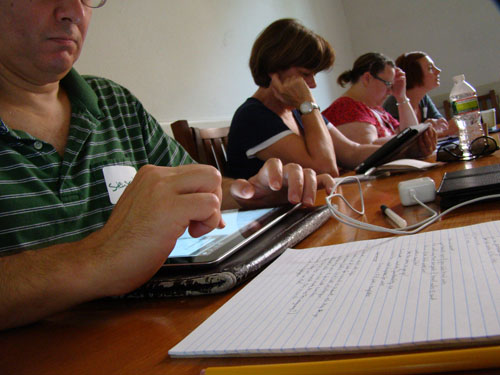
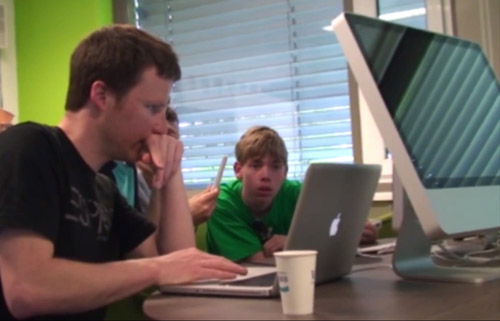
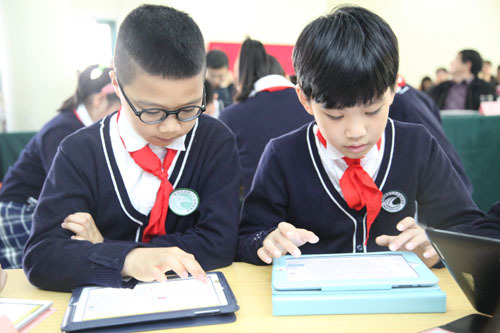
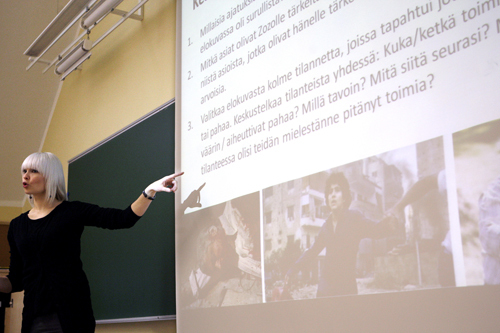
Recent Comments